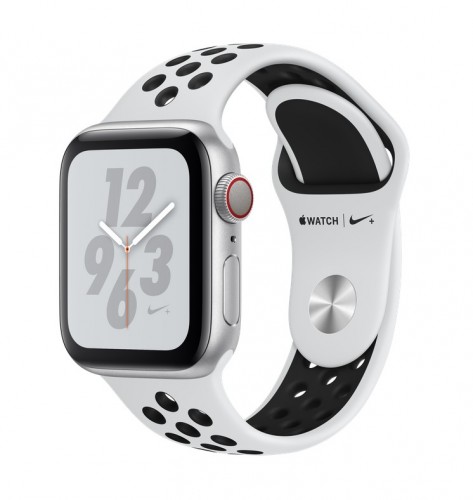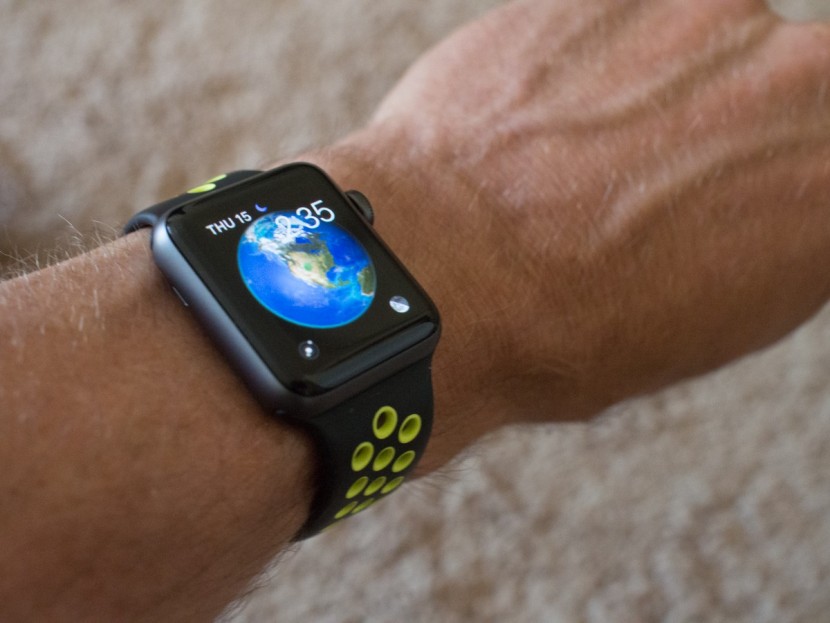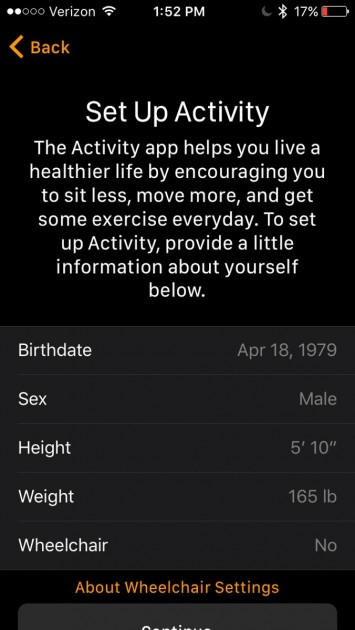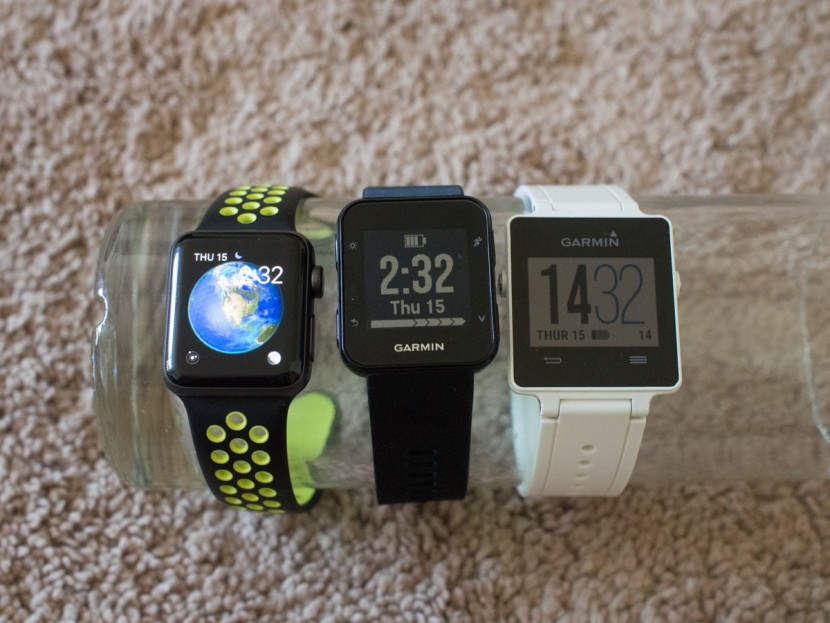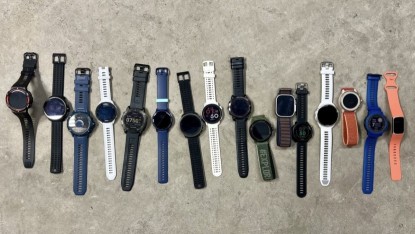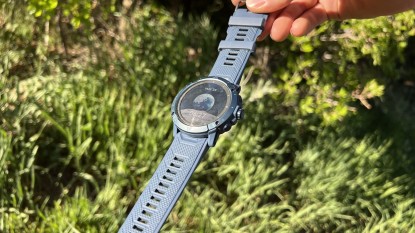Apple Nike+ Sportwatch Review
Our Verdict
Our Analysis and Test Results
Hands-On Review of the Series 2
Like other Apple products, the Apple Nike+ 38mm is an iterative, careful improvement on a product in a category that just barely existed when they entered the fray. In this case, a smartwatch targeted to athletes wasn't really a “thing” until Apple did it. Now, this is debatable, which is how Apple wants it. Nonetheless, the Apple Watch cross-branded with Nike has appeal and deserves your consideration.
Against products from the big hitters in the business, products that are in most cases much bigger, holding much larger batteries, the Apple contender does well. Not surprisingly, in the size we tested, the primary limitation is in the battery life. If it had even slightly better battery endurance (and larger sizes do), this would be a contender for the Editors' Choice award. It has fewer features than the Garmin Forerunner 935, but it has other attributes that should get your consideration. For the unique niche it fills for athletes, this contender gets our Top Pick honor.
Ease of Use
Apple, again, is known to refine existing products and services for the mass market. With their smartwatch interface and data collection system on the Nike co-branded watch, they continue this tradition. The watch can be customized with virtually limitless app and data management options, the sync is smooth and seamless, and the on-device interface is clean and largely intuitive.
In some ways, as a product with huge development support and intended for the mass market, the Apple Watch is the easiest to use in our review. For a comprehensive product, it is remarkably intuitive. Because it can be customized with an infinite array of apps, one could say that the process to learn how to use it is also limitless. Thankfully there are basic use lessons that you learn just once and any subsequent app you add is just an incremental addition. All that said, for some, the Apple Watch and its infinite applications is likely to be overwhelming for some. For those, a simpler product is going to be inherently easier to use.
The Fitbit Surge comes to mind. The Fitbit offers modern efficiency and an intuitive interface, with far simpler options. As compared to the full-service products like the Editor's Choice Garmin Forerunner 935, the Apple contender is a little more slick, but not by much. Garmin has stepped up its game, especially in terms of usability. This extends to their other products too. The other Best Buy Garmin Forerunner 35 and the clever Garmin VivoActive both have the same easy-to-use interface and data management of the Forerunner 935, and these lag just a little behind the Apple Watch.
Features
With the Apple watch, we have to separate the features into hardware and software. Because the watch can be customized with limitless apps, one could say the features are also limitless. This is only partially true. Those apps use the various antennae and sensors of the Apple Watch to generate the activity data you seek. And that hardware is fixed at the time it is manufactured. It is this fixed hardware that matters the most, in our assessment of features. In this category, we look for sensors and other hardware to capture time information, step count, sleep data, smart-watch function, GPS distance and rate, GPS navigation, temperature, barometric altitude, heart rate, and compatibility with external sensors. Of these, all we tested have timekeeping and GPS distance and speed data. The Apple Watch adds smart watch function, step count, sleep data, GPS navigation, built-in heart rate sensor, and compatibility with external sensors.
On the “software” side, no other company offers the customizability that the Apple Nike+ does. Next in line would be the high-end Garmin models and the Suunto Ambit3 Peak. These can also be customized with respective sets of customized apps. In each case, though, the selection and sophistication of the apps are less than those for the Apple Watch. After these more sophisticated customizable tools, the remainder of the watches are largely similar in the number of software features they offer.
In terms of hardware, the only clearly superior products in our review are the Garmin Forerunner 935 and Fenix 5. These are truly full-featured products, bringing timekeeping, GPS tracking, GPS navigation, smartwatch functions, barometric altimetry, a thermometer, a built-in heart rate sensor, step counting, sleep tracking, and compatibility with external sensors. This is everything we could think of, and it's all in these top-shelf Garmin devices. Next in line is a rough tie between the Suunto Ambit3 Peak and the Apple Watch. Both are complete, except for a couple of things. The Suunto does not have built-in heart rate while the Apple watch does not have a barometer nor a thermometer. All the rest of the products we tested have significantly fewer hardware features.
Accuracy
In our repeatable, repeated, standardized running track distance test, we found that the Apple Watch GPS distance data differs from the actual distance traveled by an average of 1%.
Tied with the Apple Watch, with an average of 1% error, are the Suunto Ambit3 Peak and the Garmin VivoActive.
Ease of Set-Up
The Apple Watch is super slick to set-up, provided you have an Apple iPhone. The watch and all its functions are tied to the iPhone. You can't set up nor use an Apple watch without an iPhone.
Because of minimal variation now between the set up of the various devices we tested, this scoring metric is greatly discounted. The chart above reflects the variation within what we reviewed, but as compared to products from the “pre-smartphone age,” all of these are easy to get started with. All of them set up with a smartphone connection to an app, and all require basically charging and a few clicks. Some then sync more slowly than others, but this is a passive process. The Apple Watch synced initially almost immediately while, at the other end of the spectrum, the Polar M400 took nearly an hour to get synced up.
Battery Life
Battery endurance of this contender is the poorest in our test. The Apple Nike+ 38mm is also the smallest in our test. This is not a coincidence. For the size and the feature set of the Apple Watch, its battery life is understandable. It still may not be adequate for you, but it is at least understandable. For outside, traveling workouts of longer than a few hours, the Apple Watch will be inadequate in battery life. For backcountry use, the Apple Watch will come up short. Even in day-to-day use, the recharges required every 1-2 days are tedious. Thankfully, Apple makes this same watch in a larger size, with the main differences being battery life and screen size. We did not evaluate the larger Apple watch (denoted with the “42mm” qualifier), but our experience with other watches available in different sizes and online reviews corroborate the idea that the 42mm version lasts at least slightly longer.
The screen and the functions of the Apple model suck electricity. Essentially, you should factor in daily charges for the Apple Watch and still anticipate battery limitations for days that include workouts longer than an hour or two. It is here that the Editor's Choice Garmin Forerunner 935 really steps it up. With similar use patterns, the Forerunner 935 lasts 2-3 times as long between charges as the Apple. Similarly, the Garmin VivoActive is much better than the Apple. In this case, the VivoActive goes 6-10 times as long between charges. If minimal charging hassle is a priority, the Apple Watch is not for you. If you are fine charging your watch as frequently as you charge your smartphone, this should be fine.
Portability
For the limited battery life, your gain is in portability. Apple packs piles of features and functionality into a form that is literally no bigger than a standard wrist-watch. This is excellent. Additionally, the shape is smooth and clean, which has both aesthetic and comfort advantages.
This is the smallest product we reviewed and is, therefore, among the most portable. The Garmin Forerunner 645 Music is also a standout in this category, packing a huge feature set into an impressively small package. The Editor's Choice Garmin Forerunner 935 is significantly larger than the Apple model. Even the larger, 42mm Apple watch would be among the smaller products we tested.
Best Applications
This is an excellent daily smartwatch that can be used for short-term outdoor workouts and basic backcountry navigation. The primary limitation is in battery life, requiring an average of daily charges.
Value
For the features, as compared to the rest of the field, the Apple Nike+ is actually fairly affordable. It omits just two major sensors from the Editor's Choice Garmin Forerunner 935 but is almost half the price. It is about the same price as the Suunto Ambit3 Peak and makes a feature trade-off for this equal price.
Conclusion
Dedicated endurance athletes will likely do better with another choice. However, Apple fans and those that will truly use a smartwatch in their daily life will find the Nike+ co-branded watch is serviceable in tracking at least short workouts.


